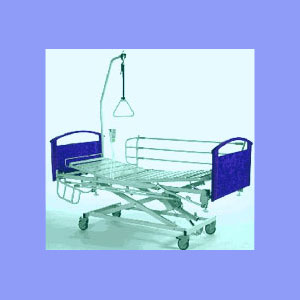
Traction for sciatica is an age old treatment which has luckily fallen out of favor due to its generally horrible results and detrimental effects. For the purposes of this discussion, traction describes the bed-ridden form in which weights and pulleys are used to pry apart the spinal structures over the course of weeks or months. It does not refer to the forms of dynamic tractioning used in some forms of chiropractic manipulation, such as Cox Technic, for example, or the traction utilized in modern spinal decompression.
This article will describe the theory of bed-ridden traction, as well as its real world effects. We will document why traction is almost always contraindicated for any chronic pain condition not involving acute traumatic injury.
What is Spinal Traction?
Traction has been used for thousands of years, in many forms, ranging from inversion to weights and pulleys. Traction used to be a mainstay of back pain treatment and patients with a wide variety of causative conditions were told to stay in bed, hooked up to complicated weight and pulley systems which would keep constant pressure on the spine in opposing directions. The idea here is to separate the spinal bones, enlarge the intervertebral spaces and take pressure off compressed neurological tissues.
Traction was used for any suspected disc concerns, arthritis and general unspecific back pain. Many times, patients would be limited to bed rest for months at a time.
Traction for Sciatica Results
Traction has proven itself to do far more harm than good in most cases. There are rarely any noticeable benefits of traction, since the force needed to separate the spinal structures really can not be safely generated using the methods employed anyway.
Additionally, the patient is forced to lie dormant and endure muscular atrophy and diminished physical functionality. It is no wonder that most patients are far worse off after their weeks or months of imprisonment, since their bodies had ceased to function normally on many levels, requiring extensive and profitable rehabilitation.
Modern systems of dynamic traction, like the DRX9000, are far more enlightened and effective and I do recommend many of these for consideration when treating certain indicated spinal abnormalities, such as intervertebral herniations.
Traction for Sciatica Factsheet
I am appalled that traction is still used in many less developed countries. I know that many of you write to me from Southeast Asia and India telling me how you endured traction for weeks or months and are still in pain. This really makes me doubt the progress of medicine in many areas of the world. It is all rather scary to know what some patients must endure.
I know from my extensive travels that traction is still employed often and irresponsibly, especially when doctors just do not know what else to do. For all of you who have endured this torture, I send you my condolences.
Remember that trying to be active is key, even during episodes of chronic sciatica pain. Lying down and taking long periods of bed rest retards the healing processes and causes a variety of problematic issues. Never assume you will be out of commission for days, weeks or months. Instead, constantly test your progress and try to move about gently every day.
If you have received a recommendation for extended duration traction from your doctor, it might be a very good idea to seek a second opinion.
Sciatica > Spinal Decompression for Sciatica > Traction for Sciatica





